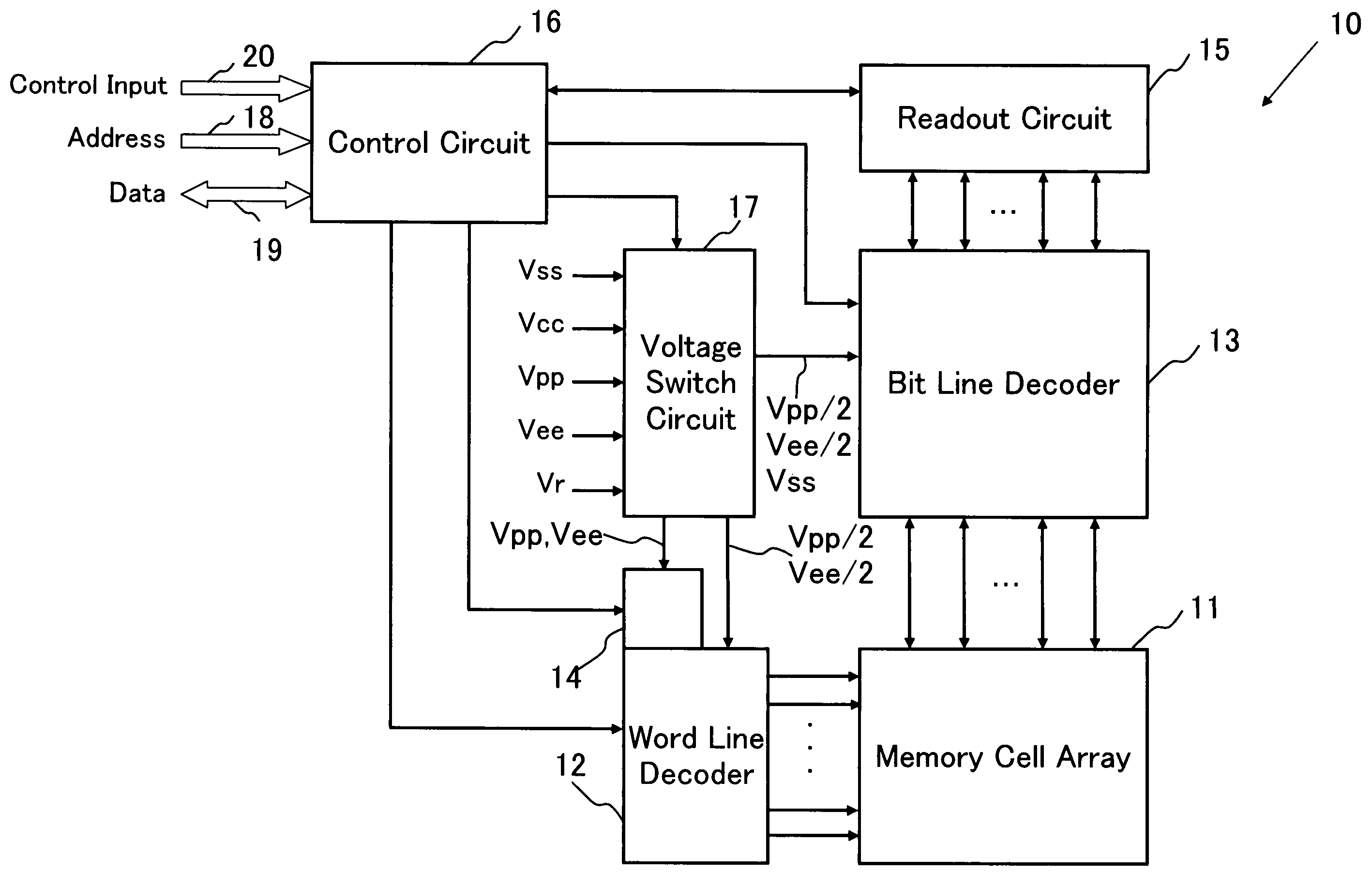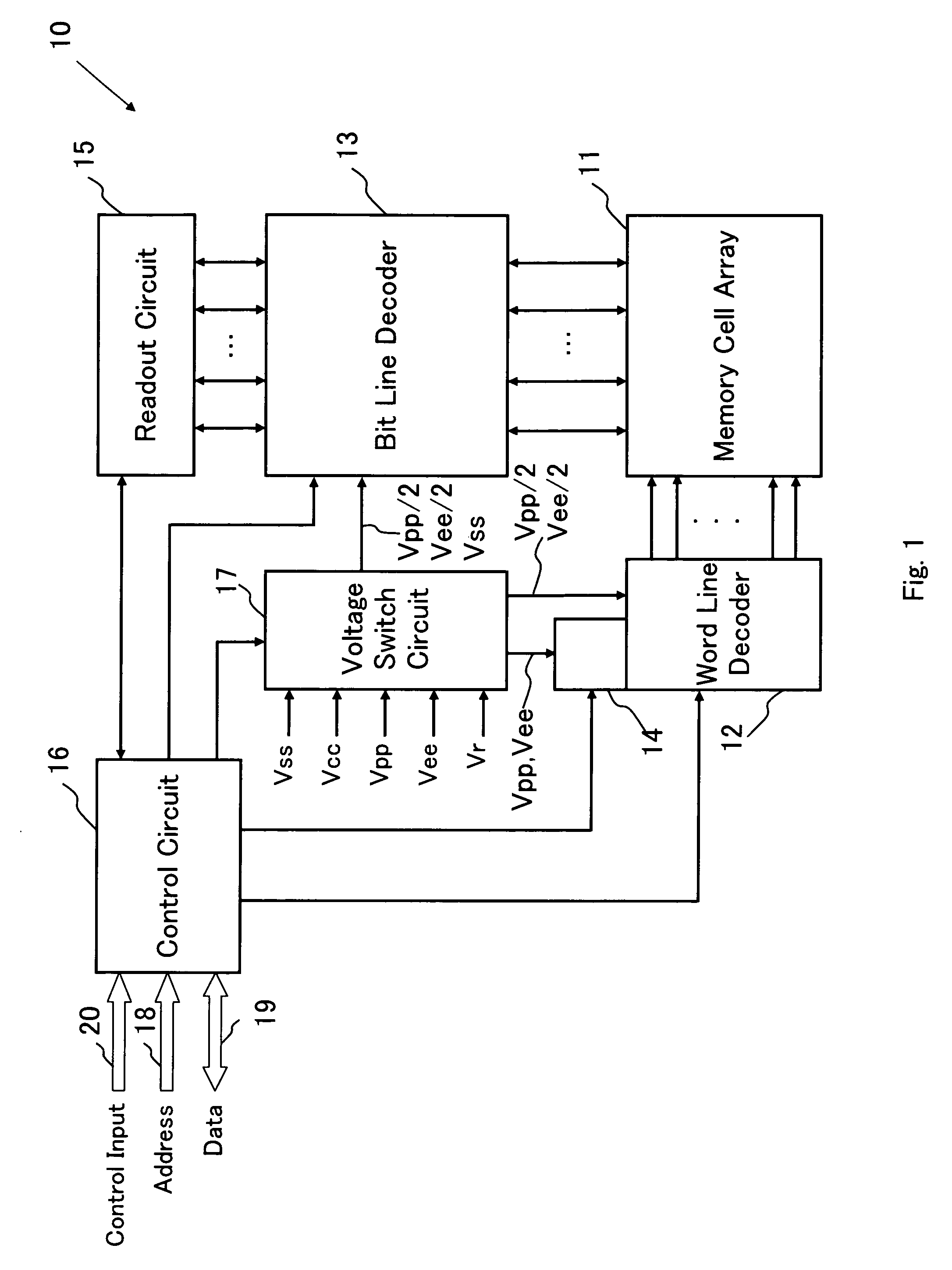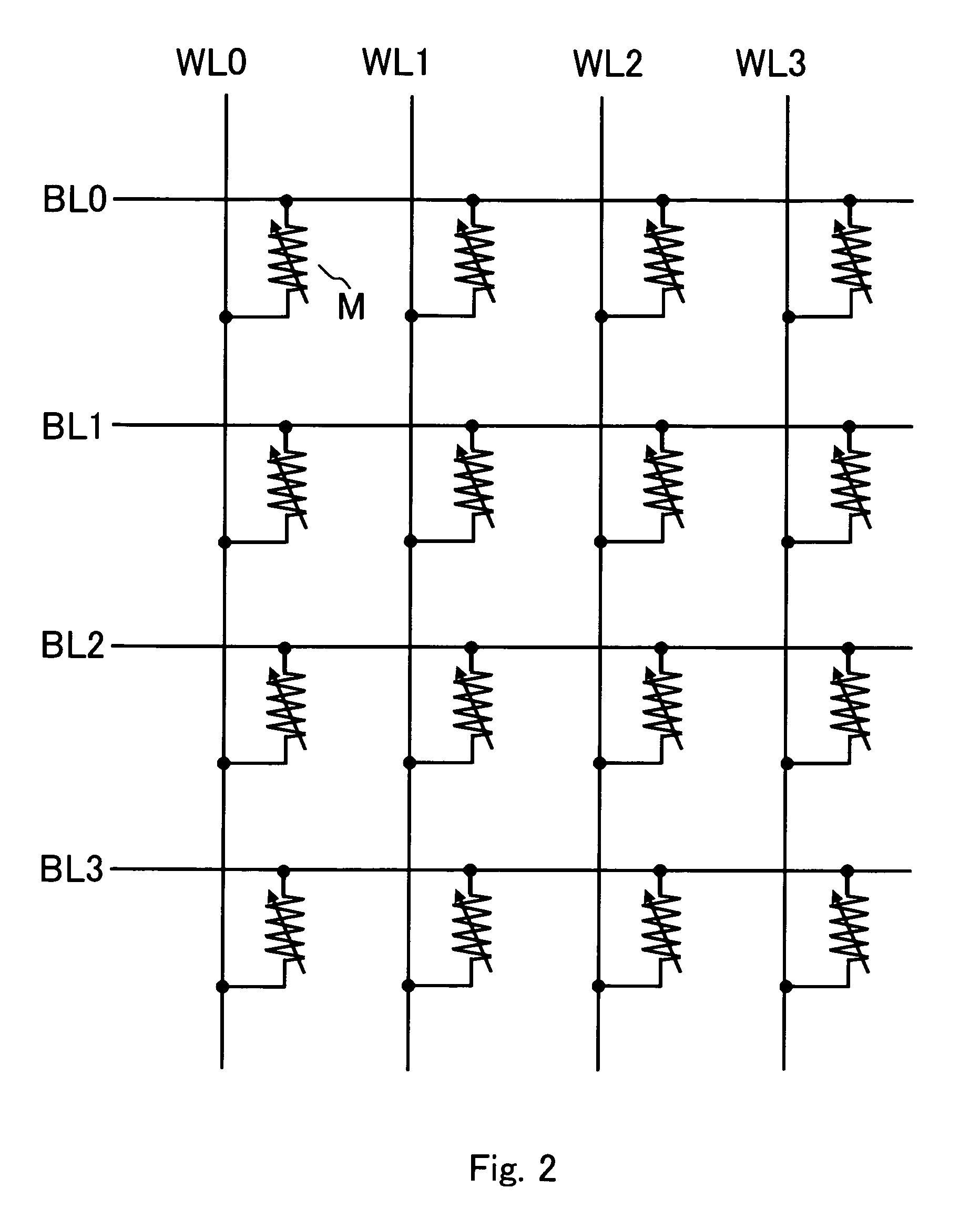Nonvolatile semiconductor memory device
a semiconductor memory and non-volatile technology, applied in static storage, digital storage, instruments, etc., can solve the problems of not being able to meet the requirements of the actual device, so as to achieve the effect of reducing manufacturing costs and simplifying manufacturing processes
- Summary
- Abstract
- Description
- Claims
- Application Information
AI Technical Summary
Benefits of technology
Problems solved by technology
Method used
Image
Examples
first embodiment
[0128]FIG. 1 shows a block configuration of a device of the present invention 10 according to one embodiment. As shown in FIG. 1, the device of the present invention 10 comprises a memory cell array 11, a word line decoder (corresponding to a word line selection circuit) 12, a bit line decoder (corresponding to a bit line selection circuit) 13, a load resistance characteristic variable circuit 14, a readout circuit 15, a control circuit 16, and a voltage switch circuit 17.
[0129]The memory cell array 11 comprises a plurality of arrays of nonvolatile memory cells arranged in a row direction and in a column direction, respectively, and not only information can be electrically programmed into memory cells to be addressed from the external, but also information stored in the addressed memory cells can be read out. More specifically, information is stored in specific memory cells in the memory cell array 11 that correspond to an address signal entered from an address line 18, and the info...
second embodiment
[0184]In the following, we describe a second embodiment of the present invention. One major characteristic of this invention lies in that it can enable stable high-speed unipolar switching operations by switching load resistive characteristics of a load circuit according to the switching direction, and without using voltage pulses having different long and short pulse width or asymmetrical variable resistive elements, whereas in the past, stable unipolar or bipolar switching operations were enabled by using voltage pulses having different, i.e., long and short pulse width or making device structure of variable resistive elements asymmetrical. We elaborately described this point in the above first embodiment. However, the technical idea of the present invention should not be limited only to the unipolar switching operations, and may also be applicable to the bipolar switching operations. In fact, the bipolar switching operations in the device of this invention, device structure of a ...
third embodiment
[0201]In the following, we describe a third embodiment of the present invention. In the conventional bipolar switching operations, although high-speed switching operation was possible, application of voltage of both positive and negative polarities was required to repeatedly perform programming and erasing of selected memory cells. Thus, the memory cells were required to conduct voltage in both directions irrespective of the polarity of voltage to be applied. In the device of the present invention, however, as we described in the above first embodiment in detail, since high-speed unipolar switching operations are possible in a stable manner, memory cells do not necessarily need to be capable of bipolar operations. In fact, as shown in FIG. 18, the memory cells can have 1D1R structure in which a variable resistive element 61 and a diode 62 are connected in series. Thus, by providing a diode in memory cells, limiting direction of current flowing through the memory cells, turning ON th...
PUM
 Login to View More
Login to View More Abstract
Description
Claims
Application Information
 Login to View More
Login to View More - R&D
- Intellectual Property
- Life Sciences
- Materials
- Tech Scout
- Unparalleled Data Quality
- Higher Quality Content
- 60% Fewer Hallucinations
Browse by: Latest US Patents, China's latest patents, Technical Efficacy Thesaurus, Application Domain, Technology Topic, Popular Technical Reports.
© 2025 PatSnap. All rights reserved.Legal|Privacy policy|Modern Slavery Act Transparency Statement|Sitemap|About US| Contact US: help@patsnap.com



